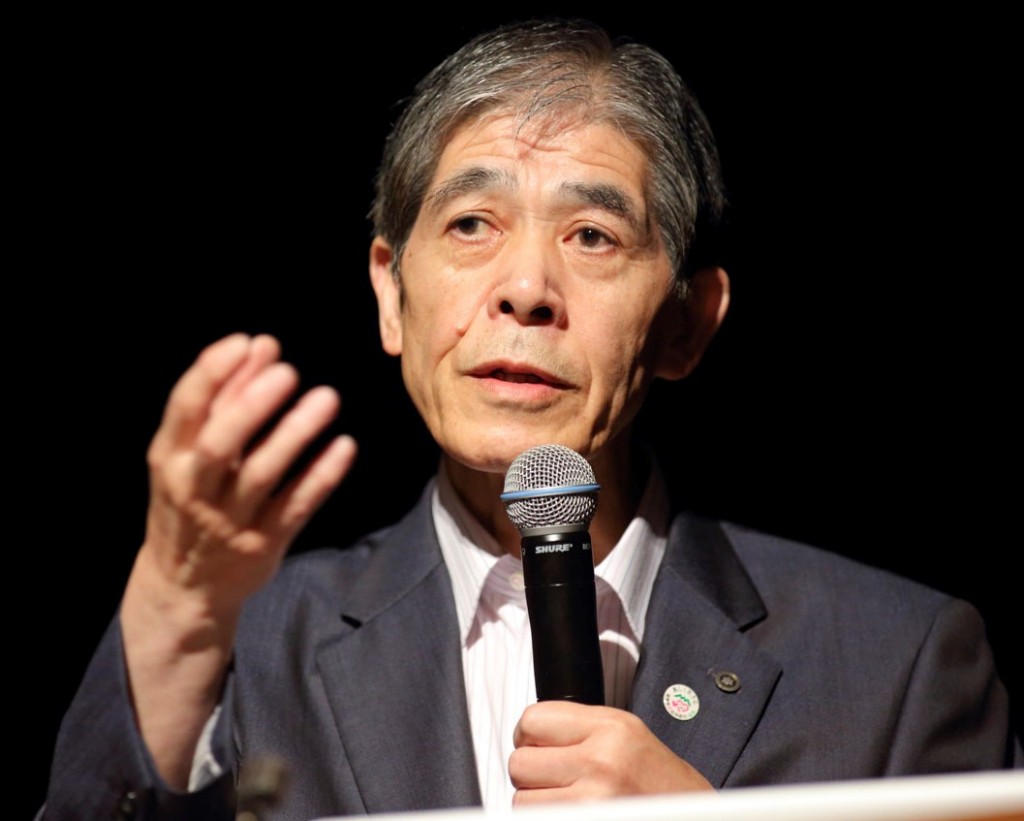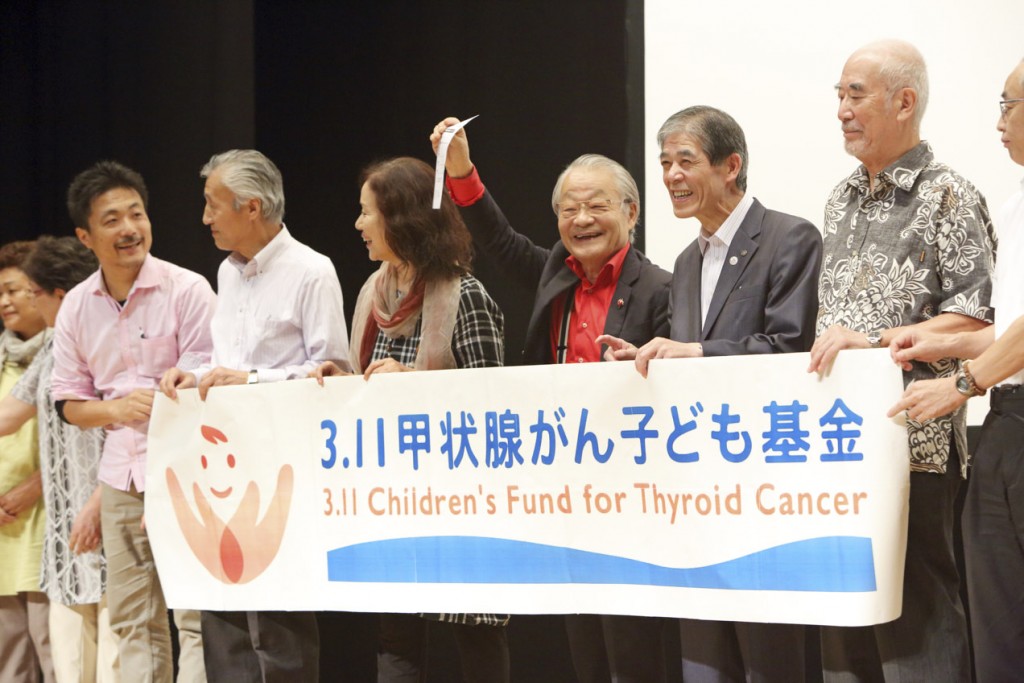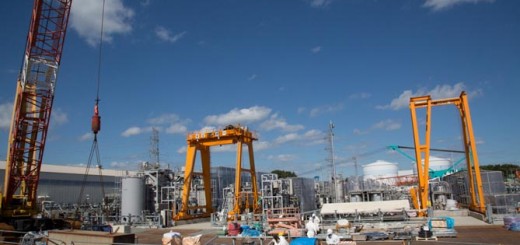Purpose of the 3/11 Fund for Children with Thyroid Cancer
It is well known that a great amount of radioactive material was emitted from Tokyo Electric Power Co.’s Fukushima Daiichi Nuclear Power Station after the disastrous accident on March 11, 2011, and spread extensively beyond prefectural borders, contaminating wide areas. Despite this fact, the government is conducting thyroid-cancer screening only in Fukushima Prefecture.
The Prefectural Oversight Committee for the Fukushima Health Management Survey (henceforth referred to as ‘oversight committee’) reported at its meeting on September 14, 2016 that a total of 175 children had been diagnosed with or were suspected of having thyroid cancer, of whom 135 had undergone operations and were confirmed as having thyroid cancer. In other prefectures, local governments and citizens’ groups are offering thyroid-cancer screening to residents independently. Some cases of cancer have been revealed.
The authorities, however, say they are detecting merely latent thyroid cancer that is not fatal and has a good prognosis, and claim that the causal relationship between the cancer and exposure to radiation is unlikely. Based on this view, they are now moving to downscale their screening system. Amid the rallying calls for recovery and restoration in Fukushima, the thyroid-cancer patients in the prefecture are coming under strong pressure to conceal their sickness. Although the patients and their families are victims of the nuclear accident and should certainly be provided with free lifetime medical support and compensated, they are now isolated from society, and even from their local communities. They are suffering from both mental distress and financial difficulties caused by having to make frequent visits to hospitals and medical clinics.
To rectify this situation, a wide variety of continuing support for the patients is necessary. Essentially, this task should be done by the government because, in the first place, it was the government that pushed ahead with the policy of nuclear power generation and who must take responsibility for the consequences. The “Act Concerning the Promotion of Measures to Provide Living Support to the Victims, including the Children, who were Affected by the TEPCO Nuclear Accident, in Order to Protect and Support their Lives” stipulates that this is the task to be carried out by the government. Yet the central and prefectural governments are heading in the opposite direction.
Knowing the various difficulties facing the recipients of thyroid cancer operations and their families, and recognizing the fact that cases of thyroid cancer have been discovered in other prefectures as well, we began discussing what we could do to improve this situation. As a result, we decided on a plan to seek donations both at home and abroad, and use the money to set up a fund for extending financial and other types of support to children with thyroid cancer and other disaster victims. The first meeting of the project was held on January 16, 2016. On February 15, we asked Akira Sugenoya, the incumbent mayor of Matsumoto City in Nagano Prefecture in central Japan, to assume the post of special advisor. He is a medical doctor who was engaged for a long time in the treatment of thyroid cancer in Chernobyl in Ukraine.

Mayor of Matsumoto City in Nagano Prefecture, Akira Sugenoya, addresses the symposium (Photo by Kou Maizawa)
Mayor Sugenoya’s lecture brings to light differences between the Japanese and Belarus governments in their approaches towards nuclear accident victims
On September 17, 2016, we held a symposium, at which Mayor Sugenoya gave the keynote lecture, to celebrate the founding of the fund for children with thyroid cancer. The title of the lecture was “Long-term challenges on damage to human health by nuclear disasters — 30 years after Chernobyl accident and five years after Fukushima.”
According to Mayor Sugenoya, the health damage caused by the Chernobyl accident was not limited to a high incidence of children’s thyroid cancer. An unusually steep increase was observed in the cases of various physical abnormalities suffered by children living in areas of low-level radioactive contamination and in the children of exposed parents. Examples of such abnormalities include hematopoietic disorders such as anemia, allergic diseases, lack of concentration, and lower physical capacity. Similar reports have been released by the Ukrainian government.
In Belarus, Ukraine, and Russia, the Chernobyl law was legislated five years after the 1986 Chernobyl nuclear accident. The law stipulates that the annual radiation exposure limit for each citizen of the three republics is 1 millisievert (mSv), and the lifetime limit is 70 mSv, the same levels as those enforced before the accident. Based on this provision, the residents of the areas with an annual exposure of 1 mSv to 5 mSv were given the right to move out of the areas, and those living in areas with an annual exposure of 5mSv or higher were required to move out of the contaminated areas.
The people affected by the nuclear accident are eligible for lifetime free-of-charge medical support. In Belarus, children living in contaminated areas are allowed to spend around one month in convalescent homes each year free of charge, the government providing this service on its own responsibility. Moreover, those aged between six and 17 are eligible for regular health check-ups twice a year.
A medical doctor in Belarus has asked Sugenoya why the Japanese government has not launched this type of national project. For the people in Belarus, where the economic situation is far worse than that of Japan, it must have been unbelievable to hear that the Japanese government does not take measures to protect children’s health. Mayor Sugenoya said that he was hard put to reply.
On another occasion, a female pediatric doctor told him that it is necessary for each one of the citizens to learn more deeply about the negative effects of radiation and the ways to protect their health from radiation.
Japan’s education and science ministry, other governmental agencies, and the Fukushima Prefectural government are spending huge amounts of public funds on the propagation of a radiation safety myth for school children, but the stark contrast between the Japanese government’s stance and that of the three Russian republics made us feel profoundly depressed. It is quite certain that the Japanese children who are the targets of the radiation safety myth will grow up knowing nothing about the dangers of radiation and will not be on the alert against the effects of radiation. This kind of distorted education will increase the risk of children’s exposure to radiation. How can we build a bright future for our country by mortgaging our children’s health?

Ruiko Muto, (see NIT No.173) (left) and Hisako Sakiyama, (right) 3/11 Fund for Children with Thyroid Cancer Deputy Director Representative, and Director Representative respectively. Dr Sakiyama is also the author of this article (Photo by Kou Maizawa)
Why is the incidence of children’s thyroid cancer high in Fukushima?
In Fukushima Prefecture, around 300,000 children aged 18 or younger received the first round of thyroid-cancer screening immediately after the 2011 nuclear disaster, of which 116 were diagnosed as having or suspected of having malignant tumors. 102 children underwent operations, and 101 were confirmed to have cancer. Since, under ordinary circumstances, no more than three children in a million suffer thyroid cancer, in the case of Fukushima children the incidence is several tens of times higher than usual, as admitted by the oversight committee in its interim report. The committee, however, claims that it is unlikely that the high incidence of thyroid cancer was caused by the children’s exposure to radiation, and attributes the high detection rate to advanced screening technology. This claim is taken to indicate that the sophisticated ultrasonic equipment used for the screening was of such high performance that many of the cases of thyroid cancer that were detected would have otherwise been left unnoticed throughout the children’s lifetimes.
Around 270,000 children received the thyroid examination in the second round of screening. Of these, 59 were diagnosed as having or suspected of having malignant tumors, 34 undergoing operations which revealed that all of these children did, in fact, have cancer. If the committee’s view that so many cases of thyroid cancer were discovered in the first round due to the screening effect, the second round of screening should not have discovered so many cases of cancer. It may be possible that a few cases that were overlooked in the first round were discovered in the second round, but the incidence in the second round was also several tens of times higher than usual. Nevertheless, the committee insists that the highly sophisticated screening contributed to the discovery of small cancers that did not require treatment. This must mean that the cancer operations conducted after the screenings were overtreatment.
Professor Shin-ichi Suzuki of Fukushima Medical University, who conducted the operations, contends that the operations were necessary and not overtreatment because the patients had invasions of cancer from the thyroid into surrounding tissues, and metastasis to lymph nodes and lungs. If this were overtreatment, how would the patients feel about the ‘unnecessary’ operations they have undergone?
The 3/11 Thyroid Cancer Family Group published an open letter to the oversight committee chairman, Hokuto Hoshi, about six months ago, asking “What percentage of the operations or how many of them were unnecessary, and were there any cases of overtreatment and errors in the thyroid cancer treatment so far?” The group has yet to receive a reply from the oversight committee.
The committee maintains that a link between the increased incidence of thyroid cancer and the patients’ exposure to radiation is inconceivable. The Q&A section of the 2010 Guidelines for Diagnosis of Thyroid Cancer by the Japan Thyroid Association (JTA), contains the question “What are the risk factors for the development of thyroid cancer?”(1) The answer to this question is that exposure to radiation at the age of 19 or younger is definitely a risk factor, and that some types of thyroid cancer have hereditary links. These comments are backed by high-quality evidence, says the guidelines. The answer also includes a comment that an increase in the patient’s weight is another risk factor, but this is not substantiated by high-quality evidence. The answer then concludes that there are no other risk factors that have been scientifically verified under the current circumstances. Judging from JTA’s answer, it would be natural to conclude that radiation exposure is the most likely cause of the numerous cases of thyroid cancer in Fukushima.
A paper that substantiates this view has recently been published. The authors pooled and reanalyzed data from 12 existing studies on relations between external radiation exposure and the incidence rate of thyroid cancer. As the solid line in the chart indicates, thyroid cancer will develop even in a patient who has been exposed to radiation of 0.1 Gy (100mSv) or less, and the cancer risk will increase linearly in proportion to the radiation-dose level. The paper says this therefore matches the linear non-threshold (LNT) model.”(2)
It is undeniable that the prognosis of thyroid cancer is better than that for other types of cancer. Thyroid cancer, however, does not undergo spontaneous regression, and there is a growing risk of its metastasis and invasion with time. The incidence of other types of cancer will increase gradually as the patient exceeds the age of 50. If children in their teens or twenties are diagnosed with cancer, they will need to concentrate their efforts on medical treatment during the time when they must tackle important life tasks, such as school and college entrance examinations, job hunting, marriage, and childbirth. Cancer will therefore exert a great influence on their life plans.
Rather than just being a matter of whether the prognosis is good or not, thyroid cancer should be seen as a very serious problem for the young people in question. In Japan, government officials and some experts are working hard to push up the screening rate of stomach, lung, and breast cancer using x-ray equipment without presenting any substantial evidence to prove that the screening will increase their survival rate. (3)
The same government officials and experts, however, insist that thyroid cancer screening is a disbenefit for people who were exposed to radiation from the Fukushima nuclear accident and are therefore at increased risk of developing thyroid cancer. This surely does not make any sense.
Conclusion
In Belarus, Ukraine, and Russia, the governments continue to provide the public with general health checkups, including screening for thyroid cancer, and to offer children living in radiation-contaminated areas the opportunity to spend around a month in convalescent homes each year at government cost. They are doing this as a national project even now, 30 years after the Chernobyl accident. This could easily be implemented by the Japanese government as well, if they had the will to do so.
To create a society where the projects for the protection of children’s health are given top priority among other national projects, citizens must stand up and push the government to move in that direction. Until the government launches such a move, our fund will continue to support children suffering from radiation-induced illnesses. We would very much like to seek your cooperation in supporting this fund.
(Hisako Sakiyama, Director Representative, 3/11 Fund for Children with Thyroid Cancer)
Reference materials:
(1) Yoshida, Akira, et al.,“Japan’s Guidelines for the Diagnosis of Thyroid Cancer: Mission, development and future,” Journal of the Japan Thyroid Association, Vol. 1, pp. 96-99, 2010
(2) Veiga L.H.S. et al. Radiation Research Vol. 185, pp. 473−484, 2016
(3) Takagi School (ed.), Radiation exposure risk from X-ray and CT scans in medical treatment, Chikuma paperbacks, 2014

People who supported the creation of the fund, including film director Jun Funabashi and actor/writer Atsuo Nakamura (Photo by Kou Maizawa)




